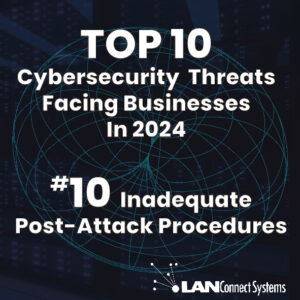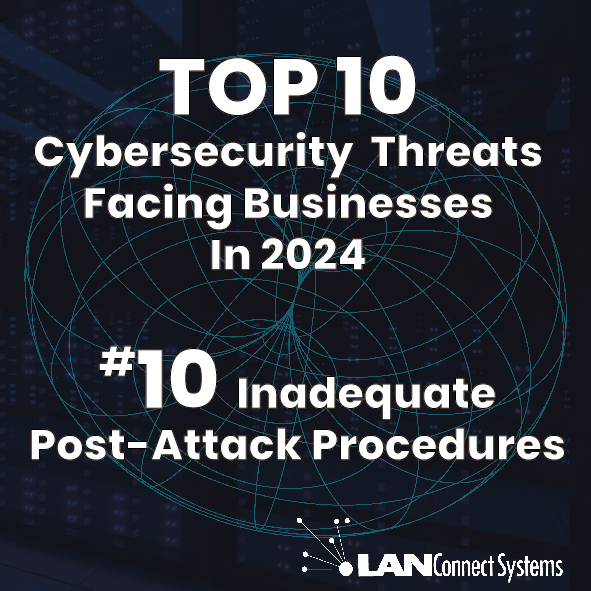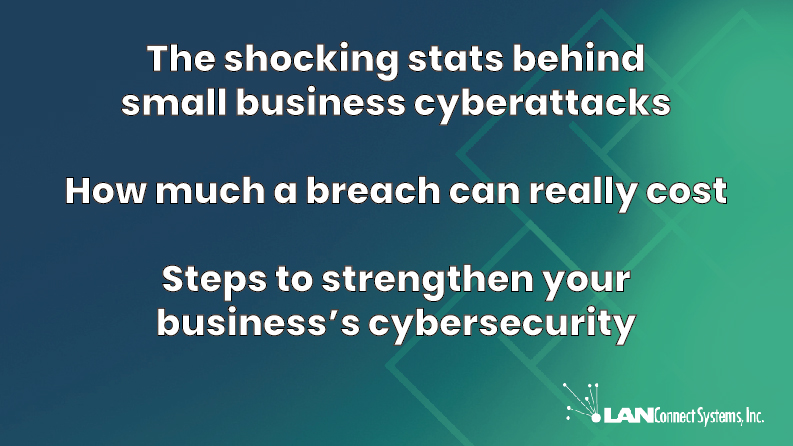
In today’s digital age, cybersecurity threats pose significant challenges to organizations of all sizes. From sophisticated ransomware attacks to vulnerabilities in cloud infrastructure, the evolving threat landscape demands proactive measures to safeguard sensitive data and preserve business continuity. In this comprehensive overview, we delve into the top 10 cybersecurity threats facing businesses in 2024. From inadequate post-attack procedures to the pervasive risk of social engineering tactics, each threat presents unique challenges and implications for cybersecurity strategies. Join us as we explore these threats in-depth and discuss actionable steps to mitigate risks and fortify defenses.
10: Inadequate Post-Attack Procedures Following a cybersecurity attack, swift action is crucial. Yet, many organizations fail to patch vulnerabilities promptly, leaving them susceptible to further breaches. Shockingly, 80% of ransomware victims faced subsequent attacks post-payment. Even more alarming, 60% of attacks could have been thwarted with timely patches. Adopting subscription-based patch management, like “Patching-as-a-Service,” ensures continuous updates, minimizing human error and bolstering defenses.
9. Data management extends beyond organization—it’s a vital security measure. As data creation doubles every four years, surplus data becomes a prime target for cybercriminals. Mishandling sensitive information can prove as costly as sophisticated attacks. Consider Aetna’s $17 million payout for a mailing mishap. In 2024, the shift to “right data” emphasizes storing necessary information, supported by automation. However, automated processes are only as reliable as their human creators, highlighting the need for vigilance.
8: Ransomware Ransomware remains a pervasive threat, evolving in sophistication and cost. The average ransom surged from $5,000 to $200,000 between 2018 and 2020. Financial losses extend beyond ransom fees, with 66% of companies facing significant revenue drops post-attack. Cybercriminals leverage ransomware-as-a-service models, continually refining their tools and tactics. Recovery is costly and uncertain, with only 57% of businesses successfully restoring data from backups. Vigilance and robust defenses are paramount.
7: Internet of Things (IoT) The IoT’s rapid expansion introduces a multitude of vulnerabilities. With over 70% of households owning smart devices, attacks on IoT networks have soared. Smart homes face an onslaught of hacking attempts, highlighting the need for heightened security measures. As IoT adoption continues to climb, so too will the risk of cyberattacks. Experts predict a surge in cellular IoT connections, with over a quarter of cyberattacks targeting businesses projected to be IoT-based by 2025.
6: Mobile Device Vulnerabilities The proliferation of remote work has driven increased reliance on mobile devices, amplifying security risks. Bring-your-own-device policies further compound vulnerabilities, as evidenced by the rise in malicious mobile applications. Mobile Device Management systems, designed to enhance security, ironically become targets for cybercriminals seeking widespread network access. The convergence of personal and corporate devices underscores the urgency for robust mobile security strategies.
5: Cloud Vulnerabilities Contrary to expectations, cloud security challenges persist and intensify. Cloud vulnerabilities surged by 150% in the last five years, with web app breaches fueling the majority of breaches. The adoption of “Zero Trust” cloud security architecture signals a paradigm shift in defense strategies. However, widespread remote work sustains the heightened threat landscape. Cloud security expenditure continues to rise, reflecting the industry’s recognition of the urgent need for fortified defenses.
4: Poor Cyber Hygiene Neglected cyber hygiene practices pose significant risks, both for individuals and organizations. Weak password management and the absence of multi-factor authentication are widespread vulnerabilities. Remote work exacerbates the reliance on insecure networks and devices, amplifying the threat landscape. Alarming statistics reveal a pervasive lack of cybersecurity awareness among both individuals and IT professionals, underscoring the critical need for education and proactive measures.
3: Configuration Mistakes Misconfigurations present exploitable opportunities for cybercriminals, jeopardizing organizational security. The convergence of socio-political upheavals and the pandemic-induced strain on employees exacerbates the prevalence of errors. Mental health challenges impact workforce productivity, amplifying the risk of inadvertent misconfigurations. Despite the growing threat landscape, a concerning proportion of IT experts remain unaware of their cybersecurity tool effectiveness, necessitating internal testing and maintenance.
2: Third-Party Exposure Third-party breaches pose significant threats, exploiting less-protected networks to infiltrate primary targets. The compromise of privileged access via contractors, as evidenced by the Socialarks breach, underscores the gravity of third-party vulnerabilities. With remote work catalyzing the shift towards independent contractors, organizations must prioritize network security. Heightened vigilance and stringent access controls are imperative to mitigate third-party risks effectively.
1: Social Engineering Social engineering tactics persist as a predominant threat, exploiting human vulnerabilities rather than technical flaws. The prevalence of phishing scams underscores the effectiveness of these tactics, with over 75% of targeted attacks initiated via email. Cybercriminals adapt, leveraging emerging trends like cryptocurrency to perpetrate sophisticated attacks. As social engineering evolves, organizations must prioritize cybersecurity awareness and resilience to thwart these pervasive threats.
Conclusion: As organizations navigate the complex terrain of cybersecurity threats, staying informed and proactive is paramount. From addressing configuration mistakes to mitigating the risk of social engineering attacks, each threat demands vigilant attention and robust defense mechanisms. By adopting a proactive approach to cybersecurity, leveraging advanced technologies, and fostering a culture of awareness and resilience, businesses can effectively mitigate risks and safeguard against potential breaches. LANConnect Systems stands ready to support organizations in their cybersecurity journey, offering tailored solutions and expertise to address the evolving threat landscape. Contact us today at 888-907-6080 or visit us at 186 GROVE STREET, FRANKLIN MA 02038 to learn more about how LANConnect Systems can empower your business to stay ahead of cybersecurity challenges.







